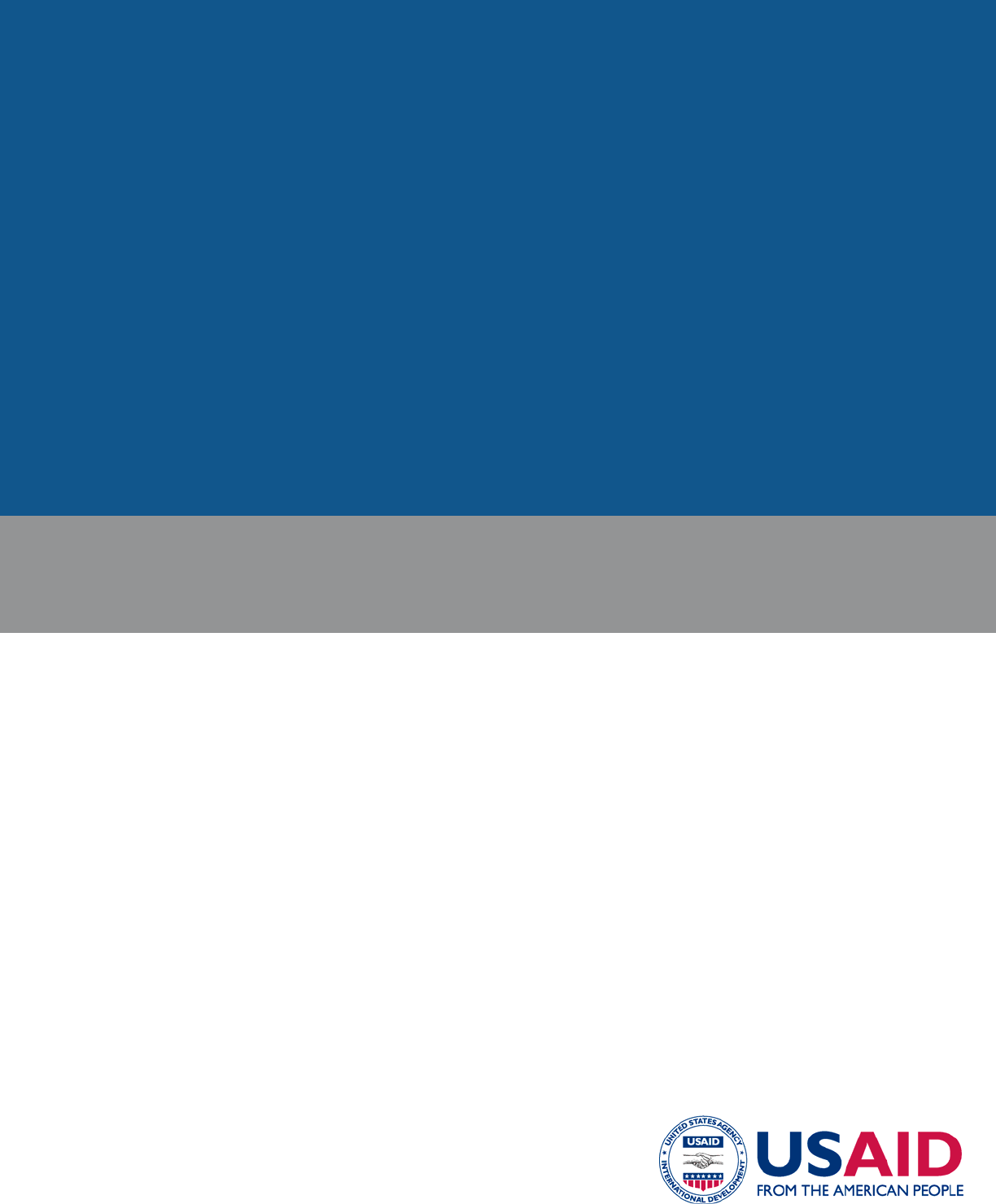
Job Fair Toolkit: A Practical Guide and Best Practices for
Organizing, Conducting, and Attending Job Fairs
Armenia Social Protection Systems Strengthening Project
USAID SO 3.4
111-C-00-06-000676-00
AECOM International Development
September 2007

USAID ARMENIA SOCIAL PROTECTION SYSTEMS
STRENGTHENING PROJECT
²ØÜ Ø¼¶-г۳ëï³Ý ëáóÇ³É³Ï³Ý å³ßïå³ÝáõÃÛ³Ý
ѳٳϳñ·»ñÇ Ñ½áñ³óÙ³Ý Íñ³·Çñ
This document was made possible with the support of the American People through
the U.S. Agency for International Development (USAID). The contents of this
document are the sole responsibility of the authors and do not necessarily reflect the
views of USAID or the US Government.
JOB FAIR TOOLKIT:
A Practical Guide and Best Practices
for Organizing, Conducting, and Attending Job Fairs
Prepared for the
RoA State Employment Services Agency
Jane Daly
USAID/SPSS
Component 2: Employment Services
Team Leader
September 2007
Yerevan
TABLE OF CONTENTS
An Introduction to Job Fairs and Job Fair Planning…………………………………… 1
A. What is a Job Fair……………………………………………………………. 1
B. Planning and Organizing Job Fairs………………………………………… 1
C. Layout and Use of this Job Fair Manual…………………………………… 2
Steps and Activities to Organize and Implement Job Fairs…………………………… 3
A. SESA Administrative Staff…………………………………………………….. 3
B. Job Fair Organizing Team and Stakeholders……………………………… 3
C. Team Leader………………………………………………………………….. 6
D. Marketing and Sponsorship Coordinator…………………………………… 7
E. Logistics and Staffing Coordinator………………………………………….. 8
F. Employer Coordinator………………………………………………………… 10
G. Signage and Graphics Designer…………………………………………….. 11
H. Secretary / Administrative Aid……………………………………………….. 12
Tips and Activities Before, During, and After the Job Fair…………………………….. 13
A. Just Before the Fair…………………………………………………………… 13
B. During the Fair…………………………………………………………………. 13
C. After the Fair……………………………………………………………………. 14
Job Fair Information and Guidelines for Job Seekers…………………………………… 15
Optimizing Your Success at Job Fairs – 50 Tips for Job Seekers…................ 16
Job Fair Guidelines for Employers…............................................................................ 19
A. What is a Job Fair....................................................................................... 19
B. Guidelines and Tips for Participating in a Job Fair…………………………. 19
Attachments:
1. Example of Job Fair needs analysis………………………………………………. 22
2. Example of announcement for pre-Job Fair informational
and promotional purposes……………………………………………….…………. 24
3. Example of employer registration letter and form………………………………… 25
4. Example of job vacancy listing form to be completed by employers…………… 27
5. Example of leaflet advertising a Job Fair…………………………………………. 28
6. Example of Job Fair employer listing (part of packet
distributed to job seekers upon arrival at Job Fair)……………………………… 29
7. Example of announcement of Job Fair orientation for job seekers……………. 30
8. Example of announcement of Job Fair orientation for employers……………… 31
9. Example of supply and equipment checklist……………………………………… 32
10. Example of Job Fair evaluation for job seekers………………………………….. 33
11. Example of Job Fair evaluation for employers…………………………………… 34
Text Boxes (details and information of key Job Fair topics):
Job Fair Needs Analysis……………………………………………………………….. 3
Job Fair Organizing and Implementation Team – Main Responsibilities…………. 4
Job Fair Goals and Objectives………………………………………………………… 4
Example of First Stages of Job Fair Timeline……………………………………….. 5
TABLE OF CONTENTS (Cont.)
Text Boxes (details and information of key Job Fair topics) cont:
Job Fair Packet………………………………………………………………………… 6
Job Fair Budget Items………………………………………………………………… 6
The Importance of Marketing………………………………………………………… 7
Sponsorship Basics…………………………………………………………………… 8
Job Fair Brochures……………………………………………………………………. 8
Job Fair Event Team – Main Tasks…………………………………………………. 9
Using Volunteers for the Job Fair……………………………………………………. 10
Training Tips for Job Fair Event Team………………………………………………. 10
Guidelines for Company Participation in Job Fairs………………………………… 10
Giveaways and ‘Freebies’…………………………………………………………….. 11
The Importance of Signs at the Job Fair…………………………………………….. 11

1
AN INTRODUCTION TO JOB FAIRS
AND JOB FAIR PLANNING
A. WHAT IS A JOB FAIR?
A Job Fair is an event where a number of employers and job seekers come together for the
purpose of applying and interviewing for jobs. Defined more precisely, a Job Fair is an
employment strategy to fast-track the meeting of job seekers and employers.
Ordinarily, Job Fairs are single day affairs held in metropolitan areas once to several times a
year. Job Fairs are typically held in large assembly halls with a booth for each employer. At
the front of each booth is a table that displays company brochures and information. Usually,
several company representatives staff each booth, standing behind tables as they talk to job
seekers. Some companies decorate their booths with banners and signs. Job Fairs range
in size from 10 – 100 employers with many hundreds of job seekers. Even small Job Fairs
can be busy events with lines of job seekers waiting to see company representatives.
Companies participate in Job Fairs to screen candidates for existing or future job openings.
Companies also participate to introduce themselves as a desirable place to work and to
promote their company. At the very least, companies will get exposure at Job Fairs, while at
the most they can make rapid hires of highly qualified applicants.
For job seekers, Job Fairs are a convenient way to apply with several companies and to get
immediate interviews. Job Fairs also enable job seekers to scope-out employers and to
gather company and career information. What can job seekers realistically expect from a Job
Fair? They can certainly obtain company and career information. They may even get an
interview at the Job Fair. However, the goal is to get ‘in-house’ interviews at companies
shortly after the Job Fair. Job seekers should be advised that it’s unlikely they’ll walk away
from the Job Fair with a new job!
Employer representatives invest a lot of time and resources to participate in Job Fairs. As
such, companies appreciate job seekers who are well prepared and have a professional
attitude. Job Seekers appreciate company representatives who are easy to approach and
have clear answers to their questions.
If employer representatives and job seekers both prepare adequately, Job Fairs can be great
successes for everyone!
B. PLANNING AND ORGANIZING JOB FAIRS
Long before employers and job seekers meet at the Job Fair, Job Fair organizers are busy
laying the groundwork – establishing objectives; locating a venue; allocating the budget;
targeting sponsors; marketing and advertising; soliciting company participation; procuring
booths and tables; and training Job Fair staff. It’s quickly apparent that much planning and
preparation precede the actual Job Fair event. For some SESA staff, the details of
organizing a professional-level Job Fair are daunting! That’s why this toolkit was developed
– to provide comprehensive yet concise steps to stage a successful Job Fair!

2
C. LAYOUT AND USE OF THIS MANUAL
This Job Fair Toolkit consists of six main sections:
1. An Introduction to Job Fairs and Job Fair Planning
2. Steps and Activities to Organize and Implement Job Fairs
3. Tips and Activities Before, During, and After the Job Fair
4. Job Fair Information and Guidelines for Job Seekers
5. Job Fair Guidelines for Employers
6. Attachments (actual forms, ads, and other useful tools)
Section 2, Steps and Activities to Organize and Implement Job Fairs, provides specific tasks
for each member of the Job Fair Organizing Team (e.g., tasks for the Team Leader,
Marketing Coordinator, Logistics Coordinator, and so on). Interspersed in the listing of tasks
are ‘text boxes’ that provide details and information on key topics. Furthermore, this symbol
“>>” refers readers to relevant forms and tools contained in the Attachments.
Sections 1, and 3-5 are self-explanatory (the titles describe their content). These Sections
are straightforward and easy for readers to use.
Please note that Section 3 (Job Fair Information and Guidelines for Job Seekers) and
Section 4 (Job Fair Guidelines for Employers) can be copied and given directly to job
seekers and employers to help them understand and function in Job Fairs.

3
STEPS AND ACTIVITIES TO ORGANIZE
AND IMPLEMENT JOB FAIRS
A. SESA ADMINISTRATIVE STAFF (National Office level)
1. Conduct a Job Fair needs analysis to evaluate necessity, viability, benefit and cost of
Job Fairs. Consider the following questions:
>> See Attachment 1 – Job Fair Needs Analysis Form
2. If the needs analysis indicates benefit, proceed and specify a budget for the Job Fair.
Designate SESA staff to preside over Job Fairs (to set targets, oversee Job Fair
provision, and insure continuous overall improvement of Job Fairs).
3. Appoint Job Fair Team Leaders at the Regional or Local Office levels.
B. JOB FAIR ORGANIZING TEAM and STAKEHOLDERS (Regional or
Local Office level)
1. Each Job Fair Team Leader (in respective Regions or Local Offices) should
designate members of their Job Fair Team. The following chart shows Team
positions and responsibilities-titles are not important, functions are important
.
JOB FAIR NEEDS ANALYSIS
A. Considering the current and projected job market, are job fairs needed?
B. Do sufficient job vacancies exist in specific regions to justify supporting and
conducting job fairs?
C. What specific improvements / benefits will job fairs yield:
1) Are employers having difficulty filling vacancies? If so, will job fairs
attract a sizeable number of highly qualified applicants?
2) Are job seekers having difficulties accessing employers? Will job fairs
improve employer access?
3) Will job fairs produce beneficial exposure and public relations for
employers, the NES, industries, communities, and regions?
4) Ultimately, will job fairs help improve regional work and business
climates? To what extent will they help promote national
employment?
D. What will job fairs cost? Consider the following outlays: a) staff time to plan,
organize, host, and follow-up job fairs; b) facilities, equipment and supplies; c)
public event permits, insurance, security, etc.
E. Does NES have financial resources and staff capabilities to organize and host
job fairs?
F. Will job fair outcomes (tang ble and subjective benefits) offset overall costs?
G.
Can NES administrators and management wholly commit to undertaking and
supporting job fairs?

4
JOB FAIR ORGANIZING & IMPLEMENTAION TEAM – MAIN RESPONSIBILITIES
Position Responsibilities
Team Leader
Marketing & Sponsorship
Coordinator
Logistics & Staffing
Coordinator
Employer Coordinator
Signage & Graphics
Designer
Secretary / Administrative
Aid
Responsible for overseeing all facets of Job Fair planning,
organization, and implementation
Responsible for Job Fair promotion and public relations, and
for attaining sponsors and donors
Responsible for procuring Job Fair venue; providing
equipment, supplies, and services; and staffing and
management of the Job Fair
Responsible for attracting and committing employers
(companies) to the Job Fair; providing guidelines for employer
participation; and serving participants’ needs before, during,
and after the Job Fair
Responsible for creating Job Fair logo and theme-art;
designing brochures, posters, and banners, and promotional
materials; and designing and fabricating Job Fair signs
Responsible for providing general clerical and secretarial
functions, and for assisting all members of the Job Fair
Organization Team with miscellaneous tasks
2. Hold initial meeting of the Job Fair Team and review, clarify, and refine groundwork
issues, such as:
team member responsibilities and tasks
Job Fair goal and objectives
scope of Job Fair (dependant on budget and resources)
tentative dates (consider weather, holidays, conflicting events)
potential venues
potential sponsors
major logistical issues (e.g., public event permits, insurance, etc.)
major tasks and timeframes
possible themes (tied to goals or objectives, or derived from contemporary
vocational / employment topics)
JOB FAIR GOALS AND OBJECTIVES
A goal is the general purpose of the Job Fair. It explains why the Job Fair is being held and
provides a road map for the planning process. Goals are not task-oriented. In most cases,
the goal will be the same from year to year. Here are some examples of Job Fair goals:
To facilitate the hiring needs of local companies and the employment needs of
local job seekers
To provide a venue to bring together employers and job seekers
To stimulate and promote the local economic and employment climate
An objective is a measurable, attainable target that when completed contributes to the
accomplishment of the goal. It is specific and contains timeframe elements. Here are
examples of Job Fair objectives:
decrease regional unemployment by 10% from the previous year
improve employer perception and satisfaction with the National Employment
Service (as measured by a satisfaction survey of employers)
promote the region to attract foreign investment opportunities (as measured by
number of inquiries by foreign investors)
Remember - setting goals and objectives is critical to Job Fair success!
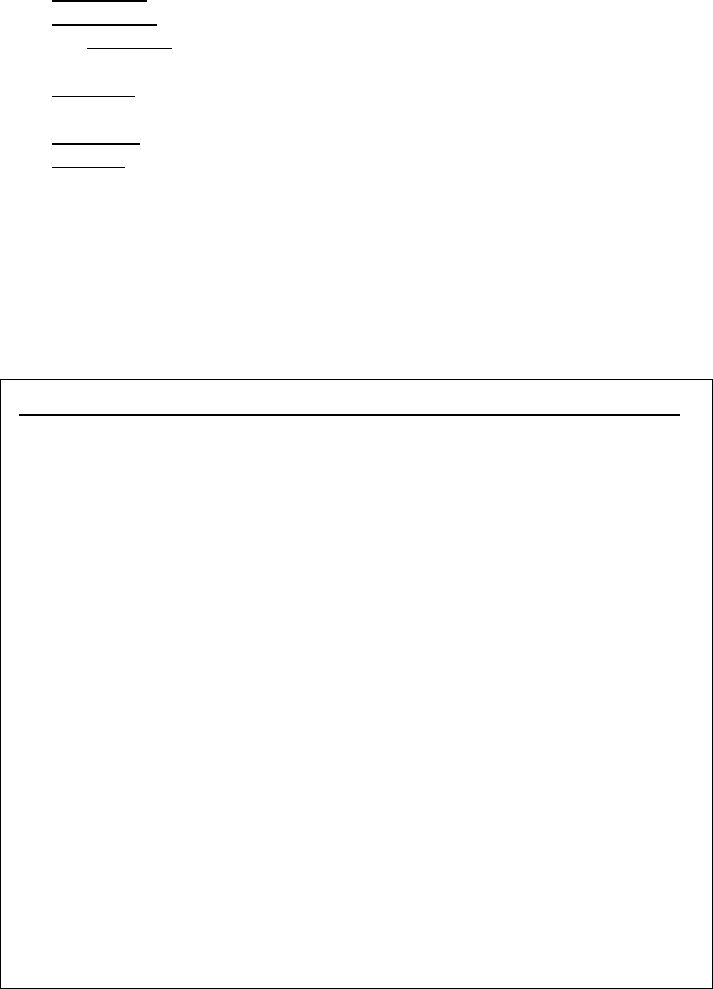
5
3. On the second meeting of the Job Fair Team (1-2 weeks after the first meeting),
consider stakeholders (people or organizations that may have a vested interest in the
Job Fair). Stakeholders include:
employers
in the region
job seekers
in the region
the providers
of the Job Fair (the SESA in this case) who organize, provide,
and conduct the Job Fair
sponsors
or donors / contributors who may provide money or in-kind
products to help fund and support the Job Fair
exhibitors
who might show products or services at the Job Fair
vendors
who might supply products or services to carry out the Job Fair
Form a stakeholders group consisting of key SESA staff, several participating
employers, and sponsors. If desired, include a limited number of job seekers,
vendors, and exhibitors in the stakeholders group. Hold several Stakeholder
meetings during the planning and organization phase of the Job Fair to discuss and
obtain feedback on objectives, activities, schedules, etc.
4. Also on the second meeting, develop a detailed timeline that identifies milestones
and dates
EXAMPLE OF FIRST STAGES OF TIMELINE
| o | o | o |
Jan Feb Mar Apr
A.-----------------|
B.
C.------|
D.
E.-------|
F.
G.-----------------|
H.-------------------------- |
I.----------------------------|
J.-------------------|
K.
………………………………………….Z.
A. Job Fair Leader designates members of Job Fair Team
B. Team holds first meeting to discuss & decide groundwork issues (e.g., goals &
objectives, venue, date, scope of Fair, logistical issues, potential sponsors, etc.)
C. Team members develop individual plans & timelines for assigned tasks & activities
D. Team meets to coordinate & consolidate timelines & form stakeholders group
E. Team members assemble cost figures for individual outlays
F. Team meets to generate detailed budget allocation
G. Logistics Coordinator acquires venue & obtains necessary permits & insurance
H. Marketing Coordinator targets sponsors and attains sponsorship agreements
I. Employer Coordinator targets companies and attains participation agreements
J. Graphics Designer creates logo & theme-art; initiates drafting of brochures & banners
K. Stakeholders meeting to discuss & obtain feedback on objectives, activities, schedules
Z. Job Fair held!
5. During subsequent meetings of the Job Fair Organization Team, carry out the
following activities:
Generate a detailed budget allocation
Provide regular updates on tasks and activities
Discuss problems, delays and constraints – create solutions
Make and coordinate assignments
Revise the Job Fair timeline on an ongoing basis
Plan and design the Job Fair packet
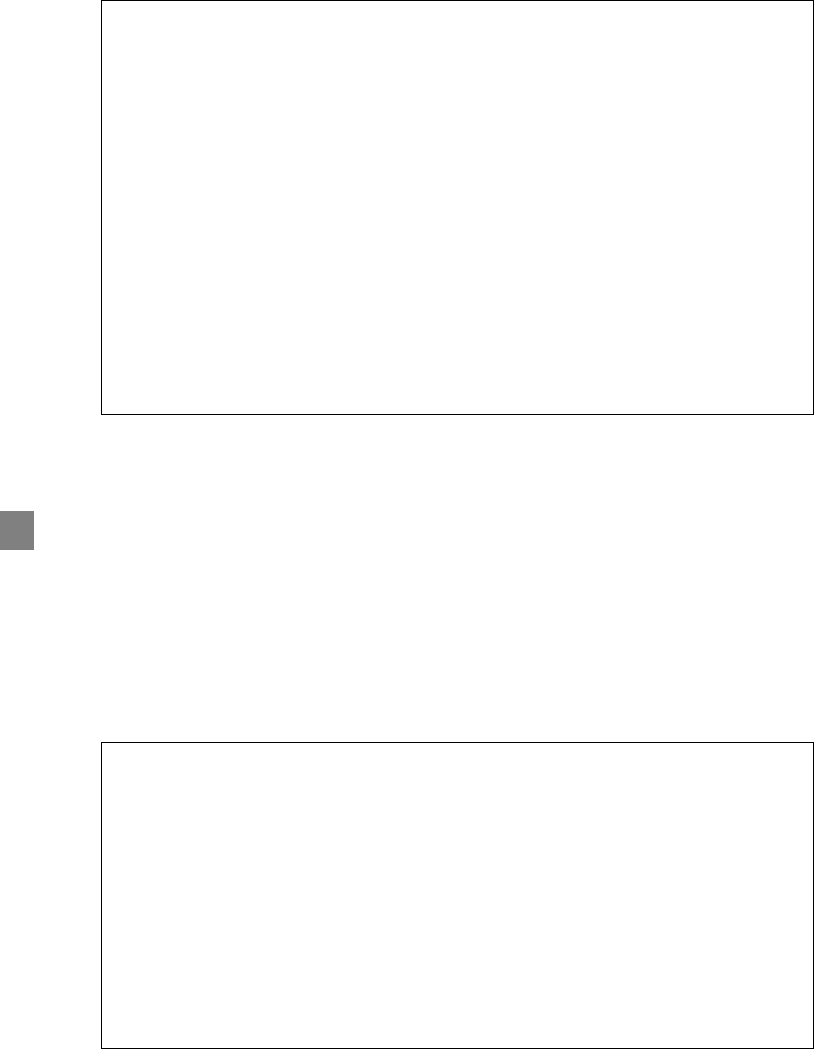
6
JOB FAIR PACKET
The Job Fair packet is distributed to job seekers at the Job Fair. It consists of the following
information:
a summary / description of the Job Fair
a list of companies represented at the Job Fair
a map of booth locations and facilities at the Job Fair
sponsor information and advertiser ads
company profiles
description and schedule of workshops (if applicable)
job seeker aids (blurbs and checklists on topics such as ‘Job Search Tips, Resume
Tips, Job Fair Tips, etc.)
contact information (telephone and email addresses for Job Fair Team)
Job Fair evaluation for job seekers
Make the packet appear professional:
have a well designed cover showing the Job Fair logo, sponsor logos, and theme-
based art
use uniform types and fonts with interesting formatting
include graphics and pictures
>> See Attachments 6 & 10 – Job Fair listing sheet and Job Fair evaluation for job seekers
C. TEAM LEADER
The Team Leader is responsible for overseeing all facets of Job Fair planning, organization,
and implementation.
Tasks of the Team Leader include:
1. Control Job Fair budget and procurement
JOB FAIR BUDGET ITEMS
What should you include in the budget – the answer to this is EVERYTHING! Job Fairs do
cost money, so careful allocation of the budget is essential. Here is a list of basic items
found in Job Fair budgets:
Venue / facility rental
Utilities (electricity, etc.)
Equipment (including rental of booth partitions, tables, chairs)
Supplies
Advertising and promotions
Printing costs (brochures, signs, banners, forms, Job Fair packets, etc.)
Decorations
Job Fair staff
2. Preside over marketing, logistics, employer relations, event staffing, and operations
3. network with stakeholders, employer groups, and community officials and councils
4. Lead development of Job Fair goals and objectives
5. Oversee development and adherence to Job Fair procedures
6. Direct Team members – assigns responsibilities, tasks, and activities
7. Ensure provision of staff, time, resources, supplies, etc., as needed to organize and
conduct the Job Fair
8. Monitor all activities
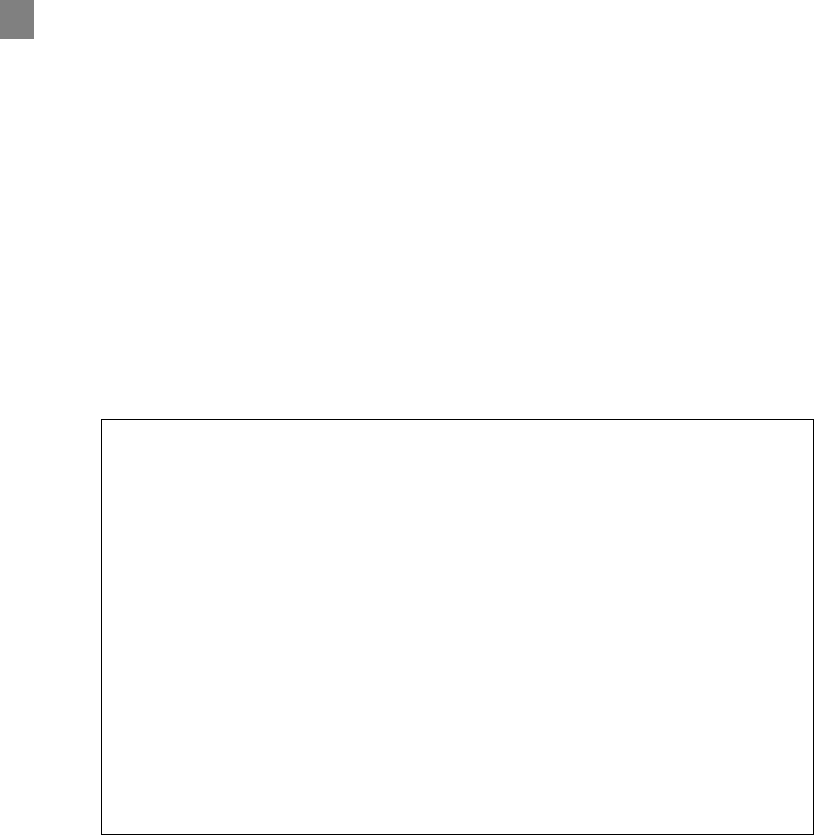
7
9. Monitor Job Fair preparation and implementation timelines
10. Make corrective actions as needed
11. Motivates Job Fair Team
12. Call and coordinate meetings
13. Ensure Job Fair sponsorship
14. Report to National Office Director of Job Fairs
D. MARKETING AND SPONSORSHIP COORDINATOR
The Marketing and Sponsorship Coordinator is responsible for Job Fair promotion and public
relations, and for attaining sponsors, donors, exhibitors, and advertisers
Tasks of the Marketing and Sponsorship Coordinator include:
1. Develop detailed plans and timeline for assigned tasks and activities
2. Develop a plan to publicize the Job Fair via print and electronic media
3. Compose and prepare ads, announcements, flyers, brochures, posters, and
billboards (in consultation with graphics designer and word processor)
4. Coordinate printing and distribution of ads, announcements, etc.
5. Procure radio and TV advertisement
6. Write press releases and arrange media coverage of Job Fair events
>> See Attachments 2 & 5 – Job Fair announcement and ad
THE IMPORTANCE OF MARKETING
Job Fair marketing is serious business. Marketing and promotion are necessary for strong
attendance. Good marketing tells employers and job seekers why they need to attend the
Job Fair and what’s in it for them. Employers and job seekers need to be convinced that
your Job Fair is worth attending. Job Fair goals and objectives play an important role in
marketing - if they’re clear the promotional campaign will be clear-cut
Here are some common marketing methods:
advertisements
signs
brochures
flyers
e-mail blast
fax distribution list
mailing list
networking
partnerships with other organizations
past participation
press / media release
7. Identify and target potential corporate or company sponsors
8. Visit appropriate corporate executives to sell benefits of Job Fair sponsorship
9. Facilitate agreement on sponsorship details (e.g., appearance of corporate logos on
printed media, corporate recognition in press coverage and radio / TV spots, etc.)
10. Attain agreements on terms of sponsorship (e.g., memorandums of understanding,
contracts, etc.)
11. Consider hosting a reception for sponsors
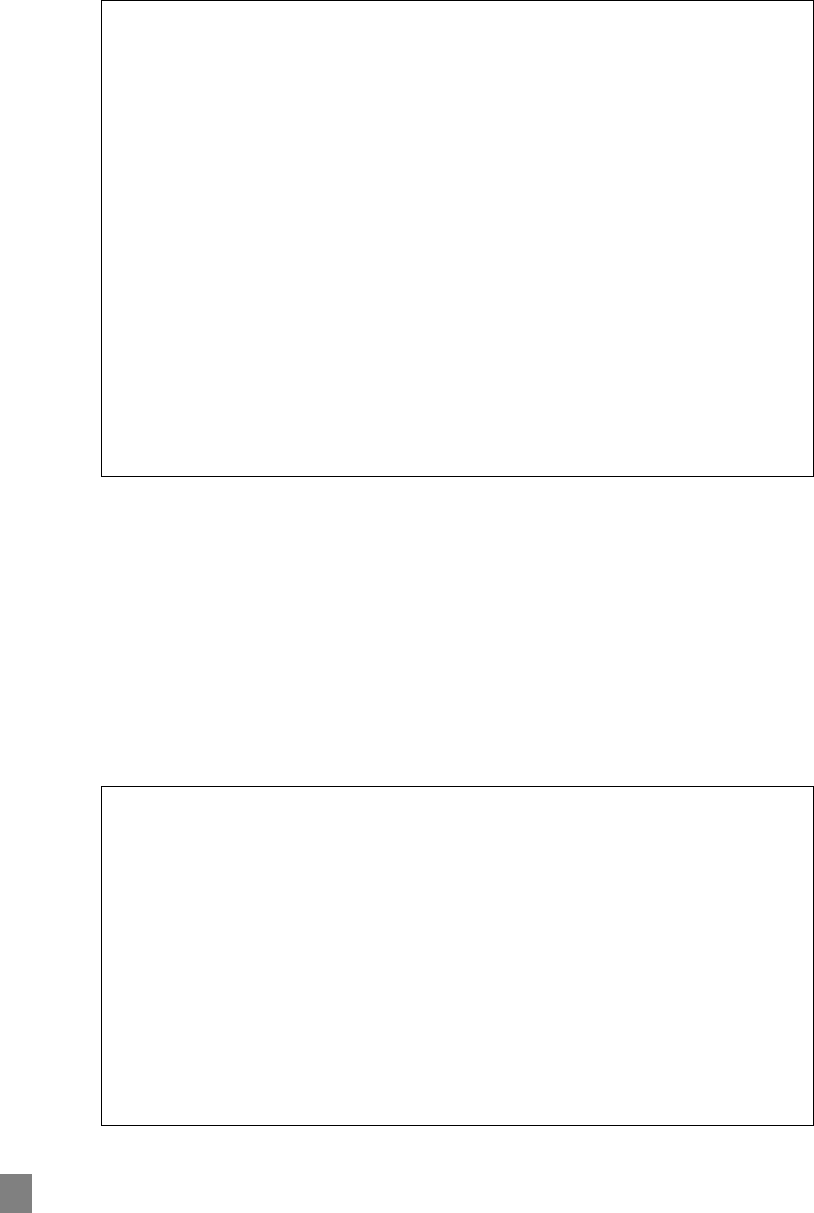
8
SPONSORSHIP BASICS
Sponsorships are in! Companies spend billions of dollars sponsoring all types of events
(including Job Fairs). Having sponsors is the best way to augment meager Job Fair
budgets. Sponsorships are a win-win opportunity – sponsors get exposure to targeted
audiences, and the SESA gets additional resources to produce high-quality Job Fairs.
Sponsors should understand the Job Fair’s goals and should be approached from the
standpoint of creating a long-term partnership. Don’t approach them just because they
have something you want. Understand what they need from the relationship and then build
a sponsorship package. Personally contact sponsors and explain the tangible benefits of
sponsorship.
Sponsorship exposure can include:
recognition with Job Fair participants
pre Job Fair mailings
logo on items
web site banner ads
promotional materials
ads, announcements
job Fair registration kit
signs
media coverage
12. Identify and enlist donors to contribute supplies, equipment, food, workshops,
speakers, t-shirts, entertainment, etc., for the Job Fair. (Try to make arrangements
with a local photocopier company to provide a copier on-site. In return you can offer
some free advertising)
13. Attain agreements with donors and contributors
14. Consult members of the Job Fair Organizing Team to determine desirability and
appropriateness of including exhibitors and advertisers at Job Fair. (Advertisers can
defray costs of the Job Fair packet.)
15. Work with the Graphics Designer and Secretary to draft necessary documents and
forms (e.g., brochures, ads, participation agreements, etc.)
JOB FAIR BROCHURES
Brochures can be costly, but they set the image for the Job Fair. Plus, attendees like having
something tangible from the Job Fair. Brochures need to have visual impact and strong
content. Be sure your promotional materials include the following:
Job Fair title and theme
Date and time
Location address and directions
Description of Job Fair
Workshop blurbs and schedule (if applicable)
Contact information (telephone numbers of Job Fair Team to answer questions)
Who should attend
Benefits of attending
Objectives (from the job seekers’ perspective)
Testimonials from previous attendees (both employers and job seekers)
Sponsors
E. LOGISTICS AND STAFFING COORDINATOR
The Logistics and Staffing Coordinator is responsible for procuring the Job Fair venue;
providing equipment, supplies, and services; and staffing and management of the Job Fair

9
Tasks of the Logistics and Staffing Coordinator include:
1. Develop detailed plans and timeline for assigned tasks and activities
2. Acquire venue (e.g., community center, auditorium, plaza). Consider size
requirements, suitability for Job Fair set-up, public access and transport, parking,
etc.). Attain agreement on venue usage
3. Obtain necessary permits and insurances
4. Plan and diagram lay-out of venue (e.g., position and arrangement of booths, tables,
registration desk, workshop or presentation areas, signs, and decorations)
5. Develop plan for placement, set-up, and take-down of booths, tables, chairs, etc.
6. Make an emergency plan outlining procedures for fire, medical emergencies,
violence, and severe weather
7. Procure all supplies, equipment, and services (contract with vendors if necessary)
8. Work with Secretary and Graphics Designer to draft necessary forms and documents
(e.g., brochures, registration form, evaluation form for employers, etc.)
9. Coordinate Job Fair sign placement and set-up
10. Ensure adherence to Job Fair Schedule
11. Determine staffing - number and type (paid or volunteer) for the following Job Fair
Event Team:
>> See Attachment 9 – Supply and Equipment Checklist
JOB FAIR EVENT TEAM – MAIN TASKS
Position Tasks
Captain
Reception Staff
Ushers
Employer Attendants
NES Counselors
Workshop Presenters or
Speakers
Cleaners / Janitors
Maintenance Worker
Set-up and take-down
laborers
Transporters / drivers
Oversee and direct all Job Fair personnel; coordinate all
activities
Greet attendees; pass-out Job Fair packets; in-take resumes
for referral service (if applicable)
Direct job seekers to employers; answer questions and serve
needs of attendees
Attend to needs of employer participants (e.g., carry materials,
help set-up and decorate booths, bring provisions to
employers, etc.)
Provide assistance to job seekers in writing resumes and
completing job applications, etc.
As a ‘drawing card’ many Job Fairs have workshops on career
topics such as, ‘Writing Effective Resumes; Proven
Interviewing Techniques; Successful Job Search Strategies,’
etc.
Clean venue during and after Job Fair event
Repair broken equipment, etc., during Job Fair
Carry, assemble, and set-up booths, tables, chairs, desks,
partitions, etc.; set-up or hang signs; lay electrical cords;
disassemble, take-down, and carry booths, etc., after the Job
Fair
Transport equipment to and from the Job Fair
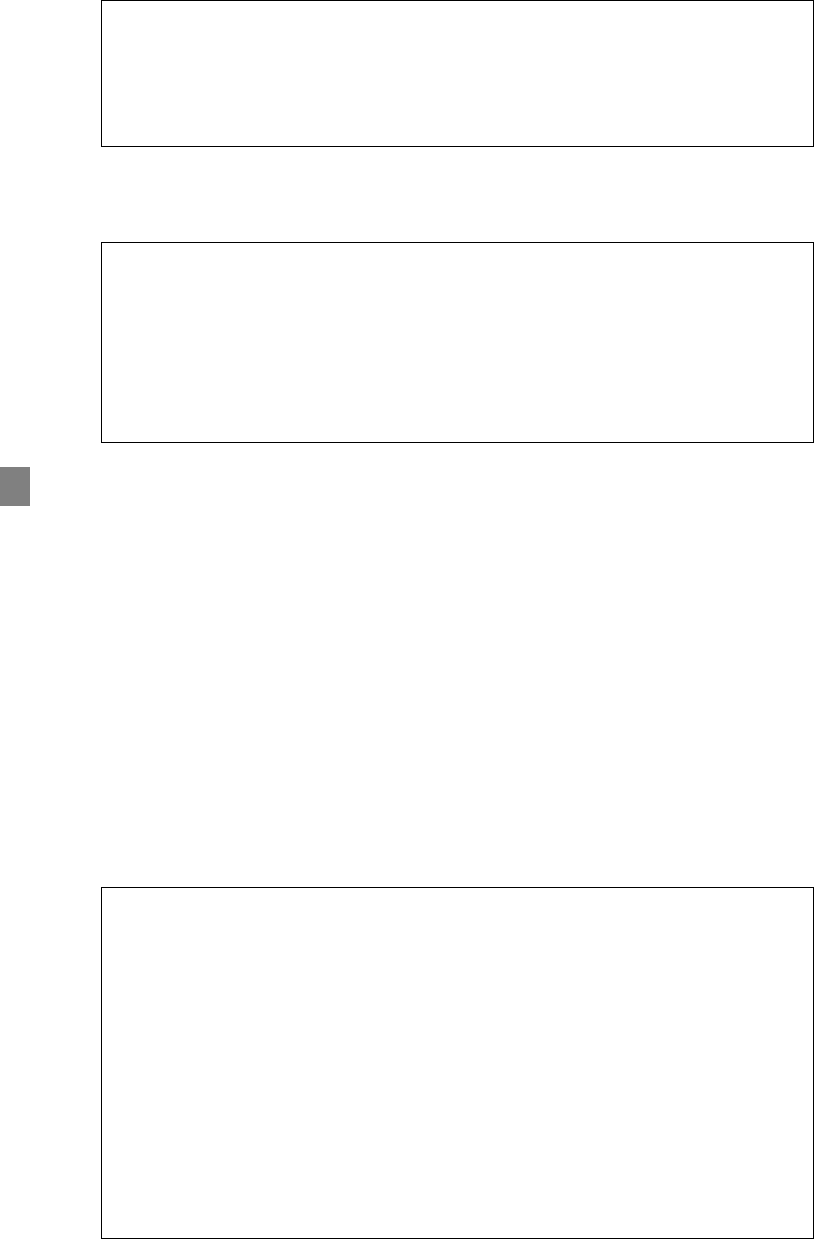
10
USING VOLUNTEERS FOR THE JOB FAIR
Most Job Fairs require volunteers. They may be from SESA or drawn from the local
community. Volunteers may or may not have experience working events like Job Fairs, so
solid training is critical. Also, pay attention to break-times and ‘perks’ for Job Fair
volunteers. Remember, volunteers are donating their time - if you take care of them they
will take care of you!
12. Provide training for all Job Fair personnel (including training on emergency
procedures)
TRAINING TIPS FOR JOB FAIR EVENT TEAM
Right before the Job Fair, the Job Fair Captain should meet with the Team to review
respons bilities, tasks, and schedules. Make sure Team members know each others roles
to avoid confusion. Also, tell members what kind of decisions they can and cannot make,
and how to direct questions. Of course, it’s suggested that these points be in writing.
After the Job Fair, meet with the Team to get feedback. Take notes so you can incorporate
these comments and suggestions into the next Job Fair.
F. EMPLOYER COORDINATOR
The Employer Coordinator is responsible for attracting and committing employers
(companies) to the Job Fair; providing guidelines for employer participation; and serving
participants’ needs before, during, and after the Job Fair.
Tasks of the Employer Coordinator include:
1. Develop detailed plans and timeline for assigned tasks and activities
2. Develop plan to attract employers to the Job Fair
3. Draft letters and materials (e.g., registration packets) to solicit employer participation
4. Identify and target potential companies
5. Send letters and registration packets to targeted companies (or visit them
personally). Explain Job Fair details to promote benefits of participation
6. Attain commitments and agree on terms of participation (see box below for factors to
consider)
7. Assemble an Employer database (for use in subsequent Job Fairs)
GUIDELINES FOR COMPANY PARTICIPATION IN JOB FAIRS
As a condition of participating in the Job Fairs, companies should agree to:
send 1-3 recruiters or hiring supervisors to staff Job Fair booths
actively recruit for existing or future vacancies at the Job Fair
interview Job Fair attendees for job openings
take job applications at the Job Fair
reasonably decorate booths and provide company materials
complete and submit the following Job Fair forms and reports:
-Agreement to Job Fair Terms & Conditions Form
-Job Fair Registration Form (including company particulars and vacancy
information for inclusion in the Job Fair packet)
-Job Fair Activity Report (information and statistics regarding job seeker
contacts, applications received, interviews, and job offers made at the Job
Fair)
-Job Fair Evaluation Form
-follow-up reports (subsequent hiring from Job Fair, etc.)
>> See Attachments 3, 4, 8, & 11 – employer registration form; job vacancy listing;
announcement of Job Fair orientation for employers; and evaluation for employers
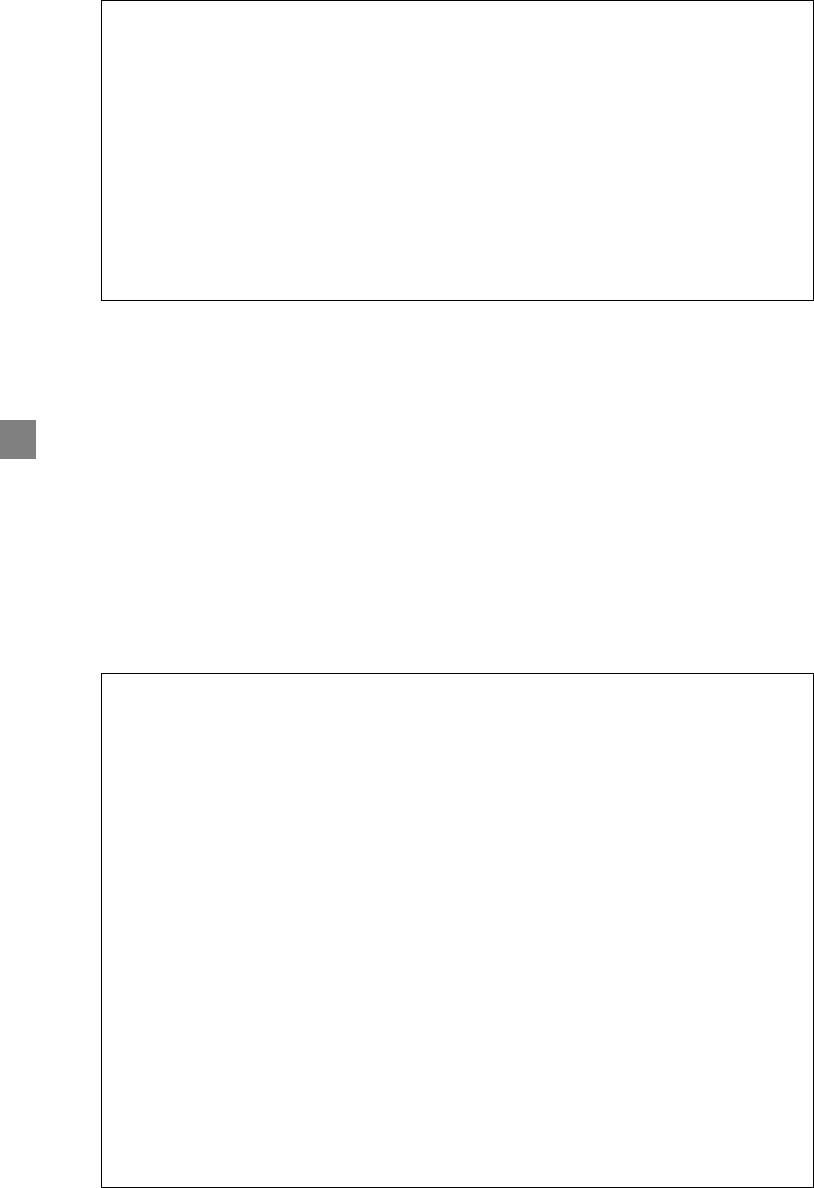
11
8. Draft necessary documents and forms (working with Secretary and Graphics
Designer)
9. Provide ongoing assistance to employer participants (e.g., help with vacancy
announcements, suggestions for booth decorations, ideas for giveaways, etc.)
GIVEAWAYS AND ‘FREEBIES’
Giveaways are gift-like items given to Job Fair attendees by sponsors or companies, usually
for promotional purposes. Here are some common giveaways:
Candies
Pens
Pocket and purse accessories (key chains, business card holders)
Calendars and clipboards
Binders
Glasses, mugs, and sport bottles
Small tools and knives
T-shirts and caps
Computer accessories (mouse pads, CD disk holders)
Small calculators
10. Arrange and conduct employer orientation session prior to Job Fair
11. Provide and collect the Job Fair evaluation form
12. Take steps to insure each employers’ satisfaction with the Job Fair
G. SIGNAGE AND GRAPHICS DESIGNER
The Signage and Graphics Designer is responsible for creating Job Fair logo and theme-art;
designing brochures, posters, and banners, and promotional materials; and designing and
fabricating Job Fair signs
(Note: This function should be coordinated by one individual to insure consistency and
uniformity of graphic style. The Job Fair Organizing Team may well decide to contract is
function to an outside person or agency).
THE IMPORTANCE OF SIGNS AT THE JOB FAIR
Signs are important to direct Job Fair attendees and to provide information. Signs, posters,
and banners also give the Job Fair a professional appearance and manner. Well before the
Job Fair, decide what signs you need, their style, their size, and approximately how many.
Here are some things to consider:
All signs should be uniform, showing the Job Fair logo, denoting the Job Fair
theme, using uniform fonts, format, and colors
Make directional signs, showing the way to areas of the Job Fair, directions to the
toilets, etc.
Determine how you’ll display the signs – with easels, taped or tacked to walls or
partitions
Don’t forget tools and equipment needed to hang signs – stool, step ladder, tacks,
hammer, tape
Make signs to acknowledge sponsors and contributors
Make sure signs are large enough and are high enough to be seen
Allocate a large part of the sign budget for the registration sign or banner. This sign is
important because it’s the first sign participants see in the Job Fair and will convey an
important first impression about the professionalism of the Fair.
A few more hints about signs:
Take blank signs and markers to make signs on the spot
For directional signs, use removable arrows that can be taped or pasted

12
Tasks of the Signage and Graphics Designer include:
1. Develop detailed plans and timeline for assigned tasks and activities
2. Create a logo or symbol that lends itself to the theme of the Job Fair
3. Design and produce Job Fair flyers, posters, ads, promotional materials, signs,
banners, etc. (in consultation with other members of the Job Fair Organizing Team)
4. Oversee printing of posters, brochures, signs, etc.
5. Advise Logistics Coordinator on sign placement and set-up
H. SECRETARY / ADMINISTRATIVE AID
The Secretary is responsible for providing general clerical and secretarial functions, and for
assisting all members of the Job Fair Organization Team with miscellaneous tasks
Tasks of the Secretary include:
1. Word process letters, forms, reports, and other papers
2. Organize and maintain all hard and electronic documents
3. Assist in procuring Job Fair supplies, equipment, and services
4. Take notes of ongoing activities pertaining to Job Fair organization and
implementation. Distribute minutes to Team and Stakeholder members
5. Record notes of Job Fair Team meetings
6. Track and revise schedules
7. Assist all Team members with clerical and logistical needs
8. File documents and or store materials for the next Job Fair (budgets, forms, letters,
lists, memos, signs, posters, templates, press releases, advertising & promotion
materials, planning and meeting notes, schedules, timelines, reports, evaluations,
supplies, equipment, etc.)
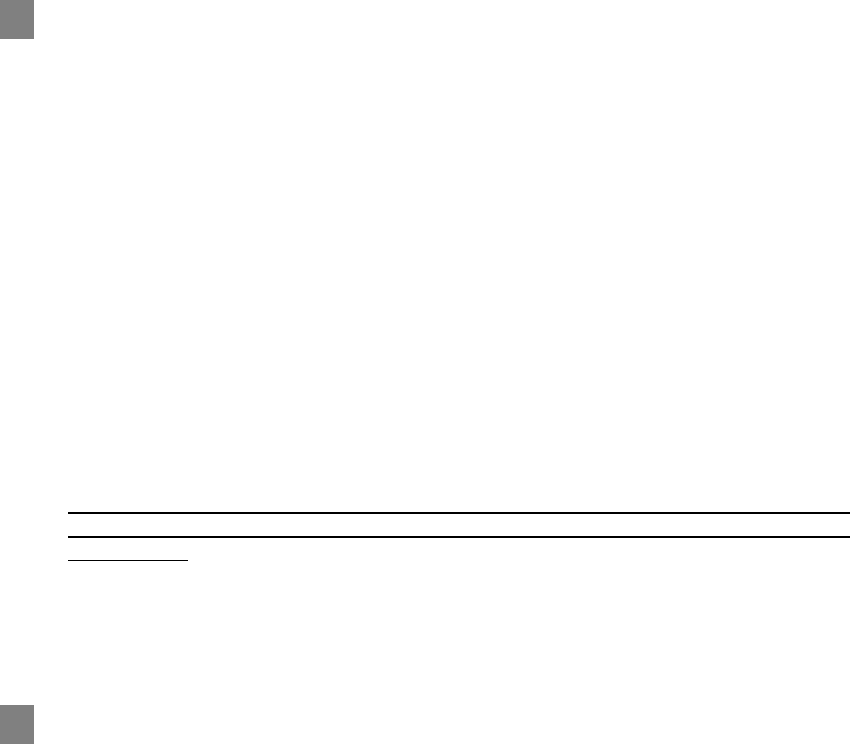
13
TIPS AND ACTIVITIES BEFORE, DURING,
and AFTER THE JOB FAIR
A. JUST BEFORE THE FAIR
Send special invitations to institutions and individuals with interests in employment
and workforce issues (e.g., unions, local government, schools, persons with special
needs, banks, etc.)
Gather the employers who will participate to prepare for job fair, provide instructions,
map of booths highlight their placement in the job fair, discussion expectations,
answer questions, prepare them for gathering critical data using forms.
Optional, but a best practice, host a seminar for employers to address contemporary
labor and job topics (e.g., hiring employees, retraining employees, labor laws,
motivating, rewarding and recognizing employees)
Offer workshops to screened job seekers on Job Fair preparation (use the ’50 Tips
for Job Seekers’ included in this document)
Inspect, clean, and prepare the venue
Fine-tune placement and locations of booths and tables
Designate locations away from the Job Fair noise and activity where employers can
conduct interviews
Determine exact sign locations
Determine strategic locations to place Job Fair staff
Prepare name tags for Job Fair event staff
Don’t forget to set-up an SESA booth at the Job Fair (staffed with counselors to
provide information and help to job Fair attendees, and to provide general promotion
of the SESA)
Make sure the staff knows what to do (e.g., greet job seekers and employers and
provide directions; circulate around the room to assist attendees with questions)
Post vacancy announcements at accessible locations and arranged so that
participants can quickly locate the type jobs they are seeking
B. DURING THE FAIR
Place volunteers at all entrances to greet participants and, when practical, to escort
them to the particular employers and to randomly select and pass out evaluation
forms to attendees during the fair.
Have representatives present for special interest groups, such as older workers,
veterans, youth, persons with disabilities, etc.
Provide something for kids to do (and advertise this in your flyers):
-Craft table (ask your local McDonalds to donate coloring books &
crayons and then designate the table as sponsored by them
-Area with storyteller
-Play area with toys
-Provide on-site child care (advertise this too!)
Periodically, offer to get soda, coffee and snacks for employers who cannot get away
from their booths

14
Provide a list of employer events and services at every booth to promote you’re
SESA. Post job seeker events and services near the entrance or provide a flyer at
the reception table.
Take pictures or video of the Job Fair to use in subsequent promotional materials or
job seeker training.
C. AFTER THE FAIR
Evaluate the Job Fair using evaluation forms and personal dialogues—be sure to
include forms from the randomly selected participants.
Gather the employers within 10 days after the fair to collect their data, to disucss their
experience, and to hear their suggestions for improvements.
Summarize results from employers, participant evaluation forms, review and provide
summarized comments to stakeholders, SESA leadership, committee for
adjustments.
Incorporate suggestions into the next Job Fair. Endeavor to improve each Job Fair!
Produce a final report
Integrate new procedures into Job Fair checklists (and into this manual). Do not
commit procedures to memory – write them down!
File documents and or store materials for the next Job Fair (budgets, forms, letters,
lists, memos, signs, posters, templates, press releases, advertising & promotion
materials, planning and meeting notes, schedules, timelines, reports, evaluations,
supplies, equipment, etc.)

15
JOB FAIR INFORMATION AND GUIDELINES
for JOB SEEKERS
A Job Fair is an event where a number of employers and job seekers come together for the
purpose of applying and interviewing for jobs. Also, job seekers can gather company
information, find out about various industries, and develop networks at Job Fairs.
Ordinarily, Job Fairs are single day affairs held in metropolitan areas once to several times a
year. Job Fairs are typically held in large assembly halls with a booth for each employer. At
the front of each booth is a table that displays company brochures and information. Usually,
several company representatives staff each booth, standing behind tables as they talk to job
seekers. Some companies decorate their booths with banners and signs. Job Fairs range
in size from 10 – 100 employers with many hundreds of job seekers. Even small Job Fairs
can be busy events with lines of job seekers waiting to see company representatives.
Job fairs provide a quick and convenient means to apply with several companies and to get
immediate interviews. Viewed this way, a Job Fair is a giant interview session. Companies
participate in Job Fairs for one main reason – to screen candidates for existing or future job
openings. Each time you approach a company’s booth, you are entering the spotlight and
being evaluated as a potential employee. After waiting in line (for as long as 15 to 30
minutes) you'll have only 1-2 minutes to speak to the employer as you’re greeted and your
resume is collected. The employer’s screening process will continue only if you make a
strong first impression. So your 2 minutes in the spotlight must be favorable and
memorable!
You should remember that employers are investing time and resources to participate in the
Job Fair. Unless job seekers do their homework, they waste their own time and the time of
employers. Employers appreciate job seekers who are prepared and have a professional
attitude. Job seekers appreciate company representatives who are easy to approach and
have clear answers to their questions. If both sides prepare adequately, Job Fairs can be
great successes for everyone!
What can you realistically expect from a Job Fair? You can certainly obtain company and
career information. You may even get an interview at the Job Fair. However, your goal is to
get ‘in-house’ interviews at companies shortly after the Job Fair (within 1-2 weeks). Be
advised - it’s unlikely you’ll walk away from the Job Fair with a new job!
Advance planning and preparation are keys to your success at Job Fairs. You need to be at
your very best at Job Fairs – ALWAYS! If you are to succeed at Job Fairs, you must have
an assertive and structured approach. To this end, you are encouraged to read, know, and
practice the following tips for Job Fair success.

16
OPTIMIZING YOUR SUCCESS AT JOB FAIRS -
50 TIPS FOR JOB SEEKERS
Before the Job Fair
1. Take the Job Fair seriously! You’re making important first impressions.
Employers remember only a few of the hundreds of job seekers they meet at the
Fair.
2. Check with your LEC for a listing of employers that will be participating at the
Fair.
3. Research the companies that interest you. Learn who the companies are and
what they do. (Check company websites if available.)
4. Be prepared to make cogent conversation and ask relevant / timely questions to
employers (this will make you an interesting and memorable applicant).
5. Create a one-minute ‘commercial’ about yourself. Your ‘commercial’ should
explain: a) who you are, b) your qualifications and accomplishments, c) special
skills and values that set you apart from other applicants, and d) one or two
specific examples of what you could do to solve actual company problems (how
you could benefit the company). Practice your ‘commercial’ out loud to feel
comfortable. Your delivery of the commercial (confident and enthusiastic, yet
natural) is perhaps more important than the content of your commercial. YOUR
OBJECTIVE IS TO SAY ONE TRULY MEMORABLE THING TO EMPLOYERS!
6. Resumes – tailor your resume to the specific job(s) you’re applying for. (If you’re
uncertain about the quality and content of your resume, visit a counselor at your
LEC) Take sufficient copies of your resume to the job fair. Make sure your
resumes are crisp and clean.
7. If there’s potential for on-the-spot interviewing or hiring at the Fair, take reference
letters and cover letters, and assemble a professional portfolio (that contains
examples of work and accomplishments).
8. Be prepared to answer questions. Review standard interview questions and
formulate your responses.
9. Prepare questions to ask employers: what opportunities and available; what are
the responsibilities; what skills are companies seeking in candidates?
10. Make a prioritized list of employers you’d like to meet with at the Job Fair (this is
your target list) .
11. Plan your strategy. Visit booths first that interest you the most (when your energy
is high and you’re at your best). Do not wonder or roam! Present yourself with a
purpose. Don’t be shy – be prepared!
12. Take pens and paper.
13. Dress for success! Dress in a manner for the job you’re applying for (e.g.,
construction job applicants need not wear suit and tie). Be well groomed. Treat
the Job Fair like any job interview.
14. Set realistic expectations. Few job seekers are hired on-the-spot at Job Fairs.
Be prepared to follow up on promising leads.
15. Block sufficient time in your schedule to attend the Job Fair. Make preparations
to arrive on time.
At the Job Fair
16. Some experts suggest to arrive early or late at the Job Fair. (The first and last
people are often remembered while the ones in between become a blur.)
17. Check-in at the registration table. Get a copy of the job fair layout, the employer
participation list, and drop off a copy of your resume (if this service is available).
Find booth locations of your targeted employers.

17
18. Briskly (but attentively) walk through the entire job fair. Scope-out employers you
want to talk to. Observe which employers are busy and which aren’t. Make
special note of employers that are conducting secondary interviews, either at their
booth or in another location (these are the employers who are serious about
hiring). Identify the person conducting secondary interviews and seek that
person out!
19. Get a feeling for the entire Job Fair. Then, go and sit for a few moments to
compose yourself and to finalize your ‘plan of attack’!
Approach your targeted companies:
20. From a distance (about 2 meters away), observe and listen to employers
interacting with other applicants. Listen to what the employer is asking. Figure
out who is in charge. What happens to the resumes (are there multiple resume
piles, does anyone write on them)?
21. Determine the highest level employer-representative in the booth. Seek this
person out.
22. While waiting in line, review information about the employer you’re approaching.
23. As you approach the table, respect other people’s privacy as they complete their
interaction with the employer.
When you meet with an employer:
24. Give an award winning SMILE!
25. Greet each employer with a firm handshake. Make eye contact! Be polite!
26. Introduce yourself. Look confident!
27. State why you have chosen this employer.
28. Try to remember the employer’s name. Glance at a nametag.
29. Show interest. State briefly what you like about the company.
30. Deliver your ‘one-minute commercial’ (that you developed in step 5 above). Be
sensitive to the timing and situation before using your ‘commercial’ – adapt it as
the circumstance dictates.
31. Listen carefully to what the employer says. The room may be noisy and busy, but
don’t be distracted. Focus, focus, focus!
32. Ask questions (the questions you prepared in step 7 above).
33. Answer questions directly, politely, and concisely. REMEMBER THE GOAL IS
TO BE ASKED BACK FOR AN ‘IN-HOUSE’ INTERVIEW.
34. Ask about the application procedure and hiring process. What’s the timeframe?
Is there a convenient time to call to follow up?
35. Do NOT ask questions about salary and benefits (wait until later for these type of
questions).
36. Request a business card or obtain a contact name, phone number, fax, and email
address. Take brochures or informational materials that are available at the
booth.
37. Don’t let promotional ‘freebies’ on the table distract you and do not grab at them.
38. Thank each employer for their time.
39. If you’re given an application form, take time to fill it out neatly and completely.
Remember the way you fill out the application is in itself an example of your work.
40. Conduct your self professionally at all times. You are ‘on stage’ even as you
stand in line or move about the Fair area.
41. Stay fresh! Job Fairs can be exhausting. If you start to get tired, take a break.
42. Network with other job seekers at the Fair. Share leads, resources, and ideas.
43. Keep a list of the employers you meet. Make notes about each company and
your conversation with each representative.
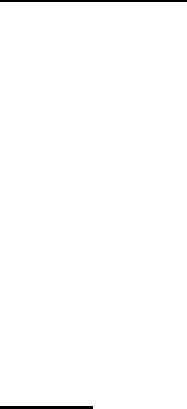
18
After the Job Fair
44. Pat yourself on the back for a job well done!
45. Review your notes from the Job Fair. Evaluate what you think went well and
what you can improve for the next Job Fair or interview.
46. Write personalized thank-you letters to companies that interest you. Cite
something specific from your discussion. Try to send letters out within two days
after the Job Fair. It’s okay to enclose a resume with your thank-you letter. This
may draw attention to your name once again.
47. Call to make sure the company received your application materials if you don’t
hear from them in two weeks after the Job Fair. At this time you can check on the
status of the position and offer to come in for an interview.
48. Continue to research the companies that interest you. Treat the Job Fair as an
initial contact, not the last.
49. Keep accurate records of your contacts, including dates of your letters or
telephone calls, and copies of all application materials that you send.
Final Tip
50. Focus on learning as much as you can about what employers are looking for in
the people they hire. The primary benefit of participation in the Fair is to collect
information and make contacts.

19
JOB FAIR OVERVIEW and
GUIDELINES FOR EMPLOYERS
A. WHAT IS A JOB FAIR?
A Job Fair is an event where a number of employers and job seekers come together for the
purpose of applying and interviewing for jobs. Defined more precisely, a Job Fair is an
employment strategy to fast-track the meeting of job seekers and employers.
Ordinarily, Job Fairs are single day affairs held in metropolitan areas once to several times a
year. Job Fairs are typically held in large assembly halls with a booth for each employer. At
the front of each booth is a table that displays company brochures and information. Usually,
several company representatives staff each booth, standing behind tables as they talk to job
seekers. Some companies decorate their booths with banners and signs. Job Fairs range
in size from 10 – 100 employers with many hundreds of job seekers. Even small Job Fairs
can be busy events with lines of job seekers waiting to see company representatives.
Companies participate in Job Fairs to screen candidates for existing or future job openings.
Companies also participate to introduce themselves as a desirable place to work and to
promote their company. At the very least, companies will get exposure at Job Fairs, while at
the most they can make rapid hires of highly qualified applicants.
For job seekers, Job Fairs are a convenient way to apply with several companies and to get
immediate interviews. Job Fairs also enable job seekers to scope-out employers and to
gather company and career information. What can job seekers realistically expect from a Job
Fair? They can certainly obtain company and career information. They may even get an
interview at the Job Fair. However, the goal is to get ‘in-house’ interviews at companies
shortly after the Job Fair. Job seekers should be advised that it’s unlikely they’ll walk away
from the Job Fair with a new job!
Employer representatives invest a lot of time and resources to participate in Job Fairs. As
such, companies appreciate job seekers who are well prepared and have a professional
attitude. Job Seekers appreciate company representatives who are easy to approach and
have clear answers to their questions.
If employer representatives and job seekers both prepare adequately, Job Fairs can be great
successes for everyone!
B. GUIDELINES AND TIPS FOR PARTICIPATING IN A JOB FAIR
1. Try to make your booth interesting and attractive. Here are some ideas:
Display a banner or sign showing your company name, logo, and colors
Use pictures or graphics to illustrate your company services or products and
to convey your company’s ideals and values
Minimize words in graphics and signs. Make your message quick and simple
2. Supply your table with company forms and materials:
Have copies of your company application form
Have a one-page (or shorter) description of each position you want to fill
Provide leaflets or brochures about your company. They’ll tell job seekers
what your company does and what it’s like to work there.
Keep business cards on the table so job seekers can contact you
20
Consider having ‘giveaways’ to promote your company (these are gift-like
items such as candies, pens, key chains, calendars, mouse pads, etc.)
3. Ensure that representatives represent your company well:
Have at least two (or perhaps 3) reps to interact with job seekers. This will
keep lines short and job seekers happy!
Have representatives that are outgoing and assertive. Your reps should be
smiling, upbeat and positive!
Have reps STAND (not sit) at the table
Greet job seekers with firm handshakes
Engage in conversation with job seekers as they walk by
Review applications and CVs as they’re collected. Ask job seekers to
elaborate on their experience and qualifications
Schedule interviews with top applicants. Conduct on-the-spot interviews if
possible!
Staff the booth with representatives that know your company’s hiring
procedures
4. Attend to job seekers after the Fair:
Follow-up with all persons who submitted applications or CVs within 10 days
Be straightforward with applicants. Telling them they did not make the
‘candidate list’ may be disappointing, but honesty is the best policy!
21
ATTACHMENTS
1. Example of Job Fair needs analysis
2. Example of announcement for pre-Job Fair informational and promotional purposes
3. Example of employer registration letter and form
4. Example of job vacancy listing form to be completed by employers
5. Example of leaflet advertising a Job Fair
6. Example of Job Fair employer listing (part of packet distributed to job seekers upon
arrival at Job Fair)
7. Example of announcement of Job Fair orientation for job seekers
8. Example of announcement of Job Fair orientation for employers
9. Example of supply and equipment checklist
10. Example of Job Fair evaluation for job seekers
11. Example of Job Fair evaluation for employers

22
Attachment 1: Example of Job Fair Needs Analysis
JOB FAIR NEEDS ANALYSIS
Assessment of Need, Viability, Benefit, & Cost
1. Considering the current and projected job market, to what extent are job fairs needed?
1 2 3 4 5
|--------------------|--------------------|--------------------|--------------------|
(--) (-) (mid) (+) (++)
2. Do sufficient job vacancies exist in specific regions to justify supporting and
conducting job fairs?
1 2 3 4 5
|--------------------|--------------------|--------------------|--------------------|
(--) (-) (mid) (+) (++)
3. What specific improvements / benefits will job fairs yield:
a. Are employers having difficulty filling vacancies? If so, to what extent will job
fairs attract a sizeable number of highly qualified applicants?
1 2 3 4 5
|--------------------|--------------------|--------------------|--------------------|
(--) (-) (mid) (+) (++)
b. Are job seekers having difficulties accessing employers? To what extent will
job fairs improve employer access?
1 2 3 4 5
|--------------------|--------------------|--------------------|--------------------|
(--) (-) (mid) (+) (++)
c. To what extent will job fairs produce beneficial exposure and public relations
for employers, SESA, industries, communities, and regions?
1 2 3 4 5
|--------------------|--------------------|--------------------|--------------------|
(--) (-) (mid) (+) (++)
d. Ultimately, to what extent will job fairs help improve regional work and
business climates? To what extent will they help promote national
employment?
1 2 3 4 5
|--------------------|--------------------|--------------------|--------------------|
(--) (-) (mid) (+) (++)
23
4. What will job fairs cost? Consider the following outlays: a) staff time to plan, organize,
host, and follow-up job fairs; b) facilities, equipment and supplies; c) miscellaneous costs
Estimated overall cost of job fairs: _________
5. Does SESA have financial resources and staff capabilities to organize and host job
fairs?
Yes ____ No____
6. To what extent will job fair outcomes (tangible and subjective benefits) offset overall
costs?
1 2 3 4 5
|--------------------|--------------------|--------------------|--------------------|
(--) (-) (mid) (+) (++)
7. To what extent can SESA administrators and management wholly commit to
undertaking and supporting job fairs?
1 2 3 4 5
|--------------------|--------------------|--------------------|--------------------|
(--) (-) (mid) (+) (++)

24
Attachment 2: Example of announcement for pre-Job Fair informational and
promotional purposes
BAY AREA JOB FAIR
16 FEBRUARY 2005
at the BAY EXPO CENTER
JOB SEEKERS Over 50 companies are expected at the Job Fair! Meet
with employers hiring for beginning, technical, and
professional positions. Talk with career counselors to
answer your job search questions. Attend career
workshops.
EMPLOYERS A booth at the Job Fair presents an ideal opportunity to fill
your job vacancies while providing valuable exposure for
your company. The Fair attracts hundreds of job seekers
with broad qualifications.
SPONSORS Sponsorship of the Job Fair offers many advantages. Your
participation will help build your name, your image, and
your pride in supporting an event that helps fuel and sustain
the local economic climate.

25
Attachment 3 – Example of Employer Registration Letter and Form
EMPLOYER REGISTRATION FOR JOB FAIR (page 1 of 2)
Our company would like to participate in the Spring 2007 Job Fair to be held on Friday 1 April 2007,
from 10:00 – 15:00, at the City Community Center
Yes
No
Our company would like to:
Recruit for current available vacancies (please complete the ‘Job Vacancies Form provided)
Recruit for future vacancies
Disseminate information about the company (please note that priority will be given to companies
recruiting for vacancies at the Job Fair
)
Company Name: _____________________________________________________________
Mailing Address: _____________________________________________________________
_____________________________________________________________
_____________________________________________________________
Telephone: ____________________________ Fax: ________________________________
Email: ______________________________ Website: _______________________________
General Manager (name / title): __________________________________________________
HR Director (name / title): ______________________________________________________
Job Fair Contact Person (name / title / telephone / email) ______________________________
____________________________________________________________________________
____________________________________________________________________________
Company Profile (100 words maximum): ____________________________________________
_____________________________________________________________________________
_____________________________________________________________________________
_____________________________________________________________________________
_____________________________________________________________________________
_____________________________________________________________________________
26
EMPLOYER REGISTRATION FOR JOB FAIR
(page 2 of 2)
Industry Classification (please mark the category that your company should be listed):
Management Consultancy
Agents/Retail/Distr bution
Banking/Finance/Insurance
Business Services
Computer/IT
Construction/Engineering Services
Consumer Goods
Development Agencies
Education
Manufacturing
Media/Communications
Transport
Travel/Tourism
Other
List of Company Representatives (Please list the names and titles of company representatives
attending the Fair. A maximum of 3 representatives are allowed per company. Names will be
included in the Job Fair packet.
1. Name: _____________________________ Title: ______________________________
2. Name: _____________________________ Title: ______________________________
3. Name: _____________________________ Title: ______________________________
Agreements:
o Companies participating in the Job Fair will actively recruit for existing or
future vacancies at the Fair
o Companies will make reasonable efforts to interview Job Fair attendees for
job openings
o Companies will take applications and/or CVs at the Fair
o Any company acting as a third-party recruiter will not be allowed to participate
in the Fair
o Companies who receive resumes for their own use during the Fair are
prohibited from forwarding these resumes to any other company.
o Companies will make reasonable efforts to decorate their booths and provide
company materials at their booth
o Companies will complete and submit the following Job Fair forms and reports:
-Job Fair Activity Report (information and statistics regarding job seeker
contacts, applications received, interviews, and job offers made at the Job
Fair)
-Job Fair Evaluation Form
-follow-up reports (subsequent hiring from Job Fair, etc.)
“I have read the above agreements and ensure that the company will adhere to
these conditions.”
Name: _______________________________ Title: ______________________________
Signature: __________________________________ Date: ________________________

27
Attachment 4: Example of a Job Vacancy Listing form to be completed by
employers
JOB VACANCY LISTING FORM
Please write a summary of the vacant positions currently available at your company, or
potential openings that should be listed in the Job Fair packet. If you have more than one
vacant positions, please attach an additional sheet(s). I you don’t have current job
vacancies but are interested in meeting with candidates for future openings, list the potential
career opportunities and required qualifications. Please note that SESA reserves the right to
edit your job ads according to our Job fair packet style.
Job Title: _____________________________ Location: ______________________
Currently available position Future potential vacancy
Job Description: ____________________________________________________
_________________________________________________________________
_________________________________________________________________
_________________________________________________________________
_________________________________________________________________
_________________________________________________________________
_________________________________________________________________
Qualifications: _____________________________________________________
________________________________________________________________
_________________________________________________________________
_________________________________________________________________
_________________________________________________________________
Monthly Compensation: ______________________
Working Hours: _____________________ Days Off: ______________________
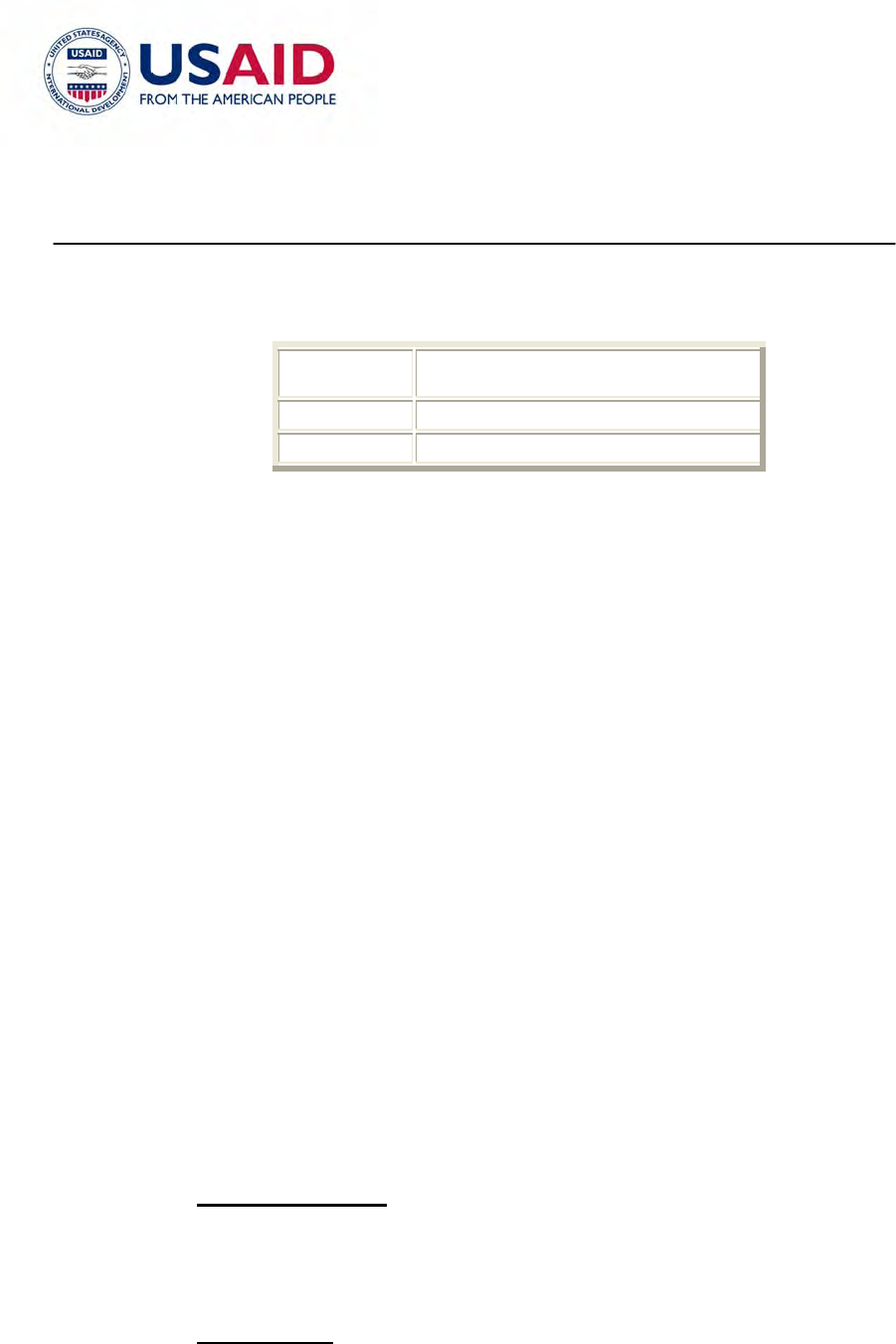
USAID ARMENIA SOCIAL PROTECTION SYSTEMS
STRENGTHENING PROJECT
²ØÜ Ø¼¶ г۳ëï³Ý êáóÇ³É³Ï³Ý å³ßïå³ÝáõÃÛ³Ý
ѳٳϳñ·»ñÇ Ñ½áñ³óÙ³Ý Íñ³·Çñ
28
Attachment 5: Example of leaflet advertising a Job Fair
Bay Area Job Fair
LOCATION:
Bay Expo Hall, 2100 Bayshore Drive,
Bay City, California
TIME:
10am – 3pm
DAY:
Wednesday, February 16, 2005
Admission and Parking are FREE!
Meet Growing Bay Area Employers!
Hundreds of Jobs - Entry Level to Professional and Technical
Committed List of Exhibitors
• American Express Financial Advisors
• CHP
• Farmers Insurance
• Gallo Sales
• Lindquist, LLP
• Naval Reserve
• Orchard Supply Hardware
• Petco
• Primerica
• Schwaab Marking Products
• Securitas
• Stanford University
• Terminix
• US Army
• Unitek College
• Verizon Wireless ... and more to come!
Special Features
• Free Career Workshops throughout the day
• Free Resume Critique throughout the day
• Deaf Interpretation (need a week’s notice)
Helpful Tips
-Dress professionally
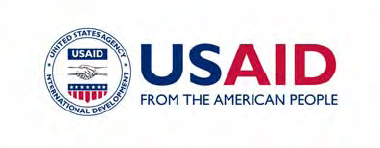
USAID ARMENIA SOCIAL PROTECTION SYSTEMS
STRENGTHENING PROJECT
²ØÜ Ø¼¶ г۳ëï³Ý êáóÇ³É³Ï³Ý å³ßïå³ÝáõÃÛ³Ý
ѳٳϳñ·»ñÇ Ñ½áñ³óÙ³Ý Íñ³·Çñ
29
-Bring 10-15 copies of your resume
-Good times to come (least busy) 11a.m. TO 12 noon
-Allow two hours to talk with company representatives
-Prepare a brief summary of your skills
-Have your questions ready
Remember: the job fair is an important step in your job search process!
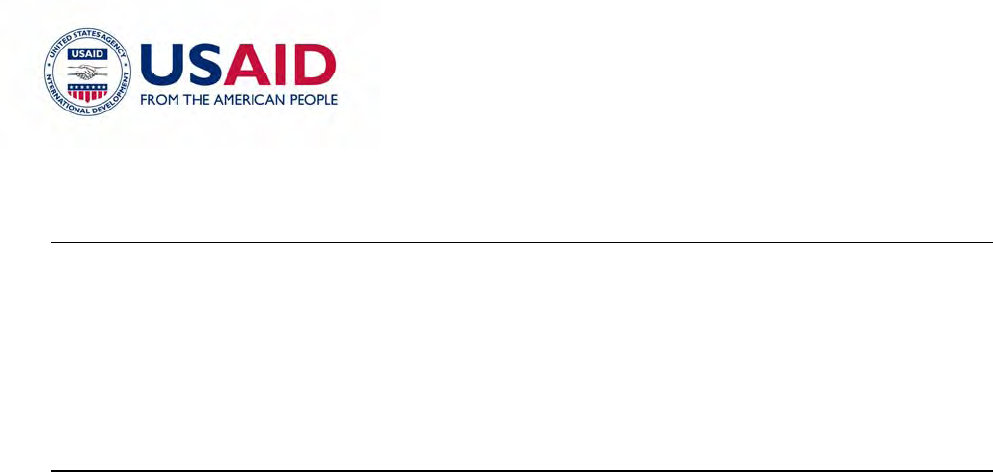
USAID ARMENIA SOCIAL PROTECTION SYSTEMS
STRENGTHENING PROJECT
²ØÜ Ø¼¶ г۳ëï³Ý êáóÇ³É³Ï³Ý å³ßïå³ÝáõÃÛ³Ý
ѳٳϳñ·»ñÇ Ñ½áñ³óÙ³Ý Íñ³·Çñ
30
Attachment 6: Example of Job Fair employer listing (part of packet distributed to job
seekers upon arrival at Job Fair)
BAY AREA JOB FAIR
Presented by the Bay Area Employment Authority
www.baea.ex
Welcome to the Bay Area Job Fair! This list provides contact and job information for
employers participating in today’s fair.
ADT Security Services
1154 Willow Road
Pleasanton, CA
510-480-51687
jackson@adt.com
Job openings or services offered: sales positions for residential, business & commercial
AFLAC
3705 Pyramid Way
Suisin, CA
603-335-5432
sommers@psb.com
Job openings or services offered: Sales Reps; Sale Management Trainees
American Express Financial Advisors
552 Shoreline Drive
Redwood Shores, CA
650-008-8000
Job openings or services offered: Financial Advisors
BEI Systron Donner
2007 Systron Drive
Concord, CA
925-543-7765
palooza@sys.com
Job openings or services offered: Sr. Mechanical Engineer; Sr. Electrical Engineer; Process
Engineer; Industrial Engineer; Machine Drafter; Sr. Quality Engineer; Sr. Equipment Technician;
Software Engineer; Production Workers (entry level & experienced)
C.A.S.T.
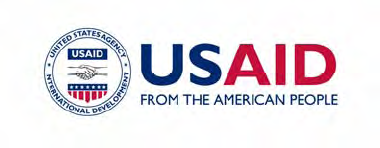
USAID ARMENIA SOCIAL PROTECTION SYSTEMS
STRENGTHENING PROJECT
²ØÜ Ø¼¶ г۳ëï³Ý êáóÇ³É³Ï³Ý å³ßïå³ÝáõÃÛ³Ý
ѳٳϳñ·»ñÇ Ñ½áñ³óÙ³Ý Íñ³·Çñ
31
1114 Citrus Avenue
Rocklin, CA
916-243-0998
terrel@cast.com
Job openings or services offered: Direct Sales Reps (looking for motivated sales personnel to sell
cable television and broadband internet services)
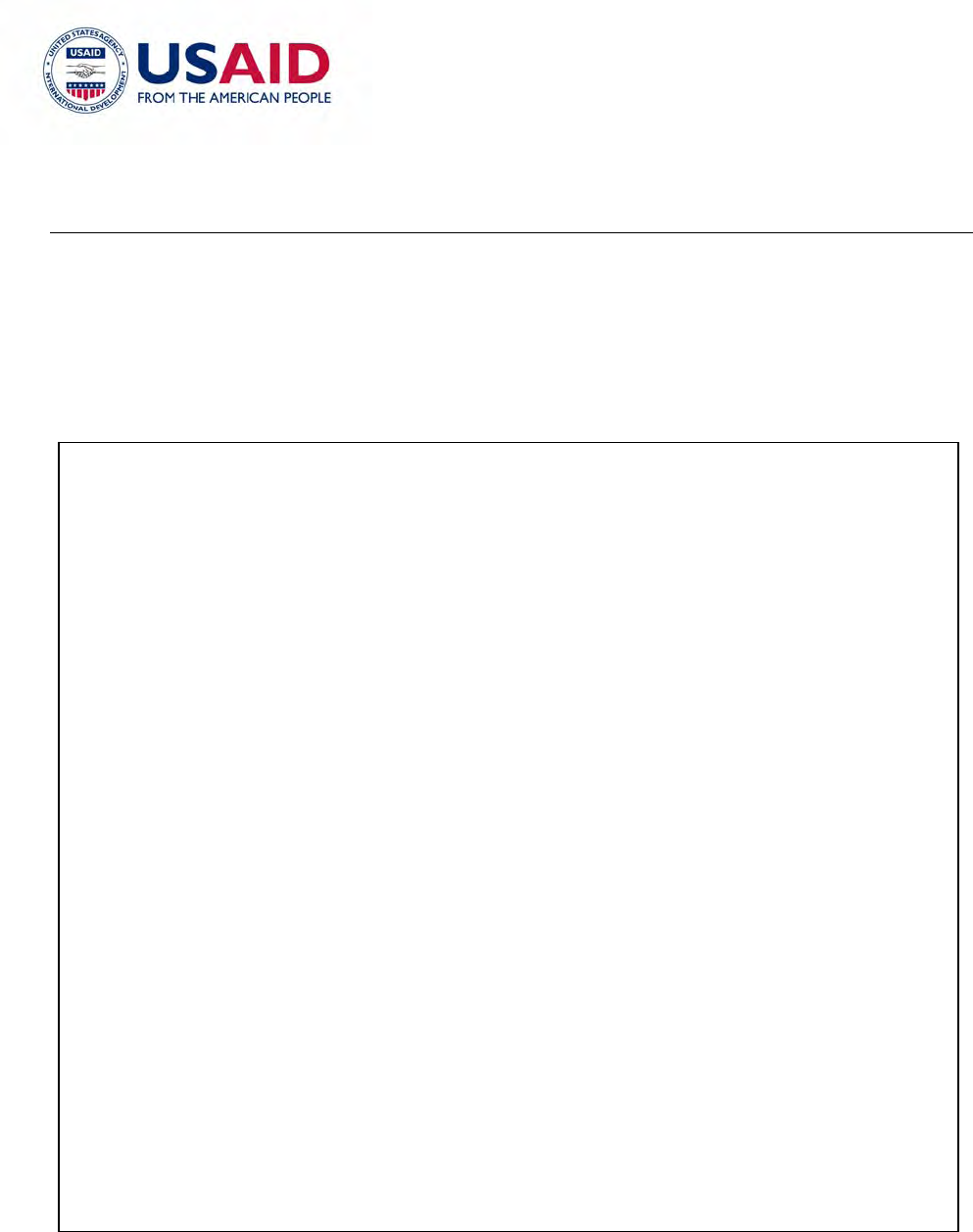
USAID ARMENIA SOCIAL PROTECTION SYSTEMS
STRENGTHENING PROJECT
²ØÜ Ø¼¶ г۳ëï³Ý êáóÇ³É³Ï³Ý å³ßïå³ÝáõÃÛ³Ý
ѳٳϳñ·»ñÇ Ñ½áñ³óÙ³Ý Íñ³·Çñ
32
Attachment 7: Example of announcement of Job Fair Orientation for Job Seekers
JOB FAIR ORIENTATION for JOB SEEKERS
Are you ready for the Bay Area Job Fair (at the Bay Expo Hall on 16 February)?
Perhaps you’re nervous about what to expect and how to act at the Job Fair. Do
not fear, the NES will alleviate your stress by providing a Job Fair Orientation! This
valuable orientation will help you:
put finishing touches on your resume
brush up on Job Fair networking teqniques
plan effective Job Fair strategies
follow up with employers to increase your job chances
Three Job Fair Orientation sessions will be offered:
8 February, 10:00-11:00
8 February, 15:00-16:00
10 February, 12:00-13:00
The orientation will be held at the NES Center on Elbo Street, in room 401.
Optimize your Job Fair experience –
attend the Job Fair Orientation!
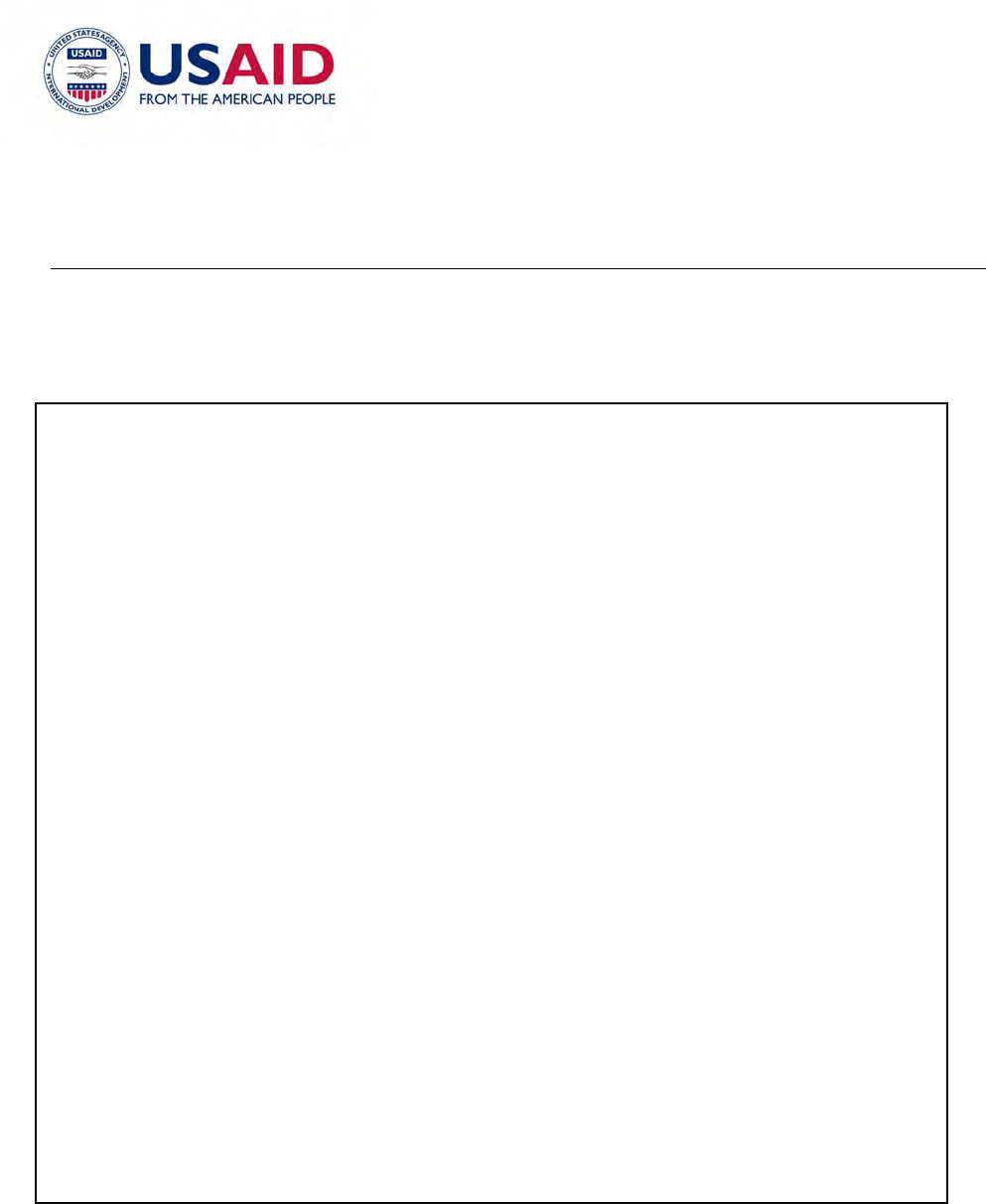
USAID ARMENIA SOCIAL PROTECTION SYSTEMS
STRENGTHENING PROJECT
²ØÜ Ø¼¶ г۳ëï³Ý êáóÇ³É³Ï³Ý å³ßïå³ÝáõÃÛ³Ý
ѳٳϳñ·»ñÇ Ñ½áñ³óÙ³Ý Íñ³·Çñ
33
Attachment 8: Example of announcement of Job Fair Orientation for Employers
JOB FAIR ORIENTATION for EMPLOYERS
The annual Bay Area Job Fair is a one-day recruiting event that attracts hundreds
of job seekers with broad qualifications. As such, the Fair gives employers an
efficient means of filling job vacancies while providing valuable exposure in the
community and region.
To help employers achieve maximum impact at the Fair, the NES is hosting a Job
Fair Orientation. This valuable orientation will help you:
prepare for the Job Fair
gain tips for setting-up your booth
maximize your participation in the Job Fair
One Job Fair Orientation for employers will be offered:
7 February, 9:00-10:00
The orientation will be held at the NES Center on Kennedy Street, in room 401.
Optimize your Job Fair experience –
attend the Job Fair Orientation!

USAID ARMENIA SOCIAL PROTECTION SYSTEMS
STRENGTHENING PROJECT
²ØÜ Ø¼¶ г۳ëï³Ý êáóÇ³É³Ï³Ý å³ßïå³ÝáõÃÛ³Ý
ѳٳϳñ·»ñÇ Ñ½áñ³óÙ³Ý Íñ³·Çñ
34
Attachment 9: Example Supply and Equipment Checklist
SUPPLY & EQUIPMENT CHECKLIST for JOB FAIRS
Tables
Chairs
Booth partitions
Decorations
Draperies
Balloons
Banners
Reception table
Reception banner
Signs
Easels for signs and flipcharts
Bulletin boards
Flip charts
Electricity
Electrical extension cords
Electrical outlet multipliers
Office supplies
Paper
paper clips
note pads
folders
envelopes
clip boards
writing pens
marking pens
pencils
scissors
staplers
staples
transparent tape
Job Fair packets
Job fair brochures
Registration forms
SESA forms and materials
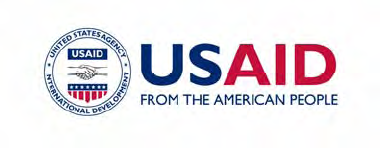
USAID ARMENIA SOCIAL PROTECTION SYSTEMS
STRENGTHENING PROJECT
²ØÜ Ø¼¶ г۳ëï³Ý êáóÇ³É³Ï³Ý å³ßïå³ÝáõÃÛ³Ý
ѳٳϳñ·»ñÇ Ñ½áñ³óÙ³Ý Íñ³·Çñ
35
heavy duty tape (to hang signs and posters, and to make repairs)
Nails, tacks
Tools (hammer, pliers, knife, screwdrivers)
Stool or step ladder (to hang signs and assemble booth partitions)
Waste baskets
First aid kit
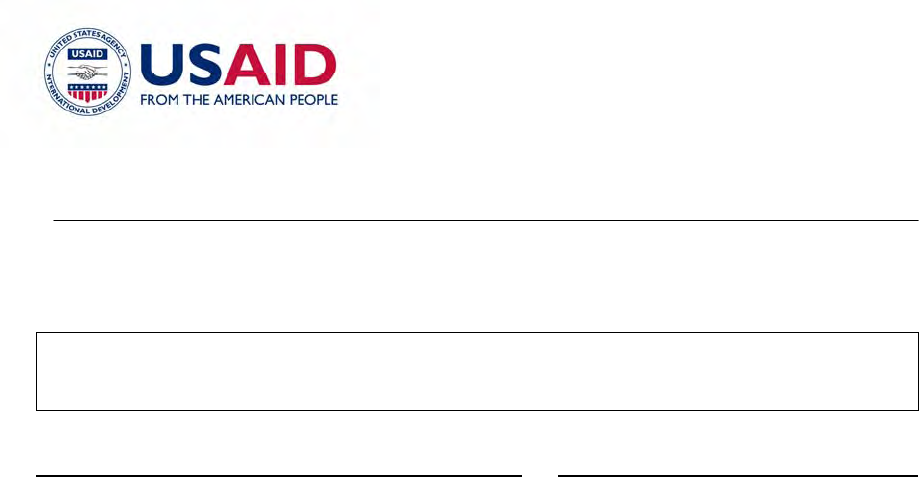
USAID ARMENIA SOCIAL PROTECTION SYSTEMS
STRENGTHENING PROJECT
²ØÜ Ø¼¶ г۳ëï³Ý êáóÇ³É³Ï³Ý å³ßïå³ÝáõÃÛ³Ý
ѳٳϳñ·»ñÇ Ñ½áñ³óÙ³Ý Íñ³·Çñ
36
Attachment 10 - Example of Job Fair Evaluation for Job Seekers
JOB FAIR EVALUATION FOR JOB SEEKERS
Thank you for attending today’s Job Fair! Please help us improve our Job Fairs by completing
this questionnaire.
Question: Please indicate your response
1. Did you feel welcome? Yes Somewhat No
2. Did you wait longer than expected? Yes Somewhat No
3. How many Job Fairs have you attended? 0 1 2 3 (more than 3)
4. What type of position were you ____________________
searching for?
____________________
5. How did you find out about today’s Fair?
SESA local office
Flyer or leaflet
Sign posted at business
establishment
Sign posted on street
Newspaper ad
Radio or TV ad
Other
6. Did you understand the purpose of the Yes No
Job Fair before today’s event?
7. About how many employer-representative 0 1 2 3 (more than 3)
did you speak to?
8. About how many applications or CVs did 0 1 2 3 (more than 3)
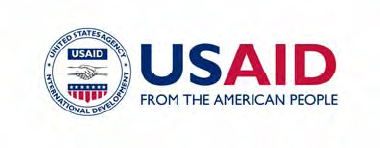
USAID ARMENIA SOCIAL PROTECTION SYSTEMS
STRENGTHENING PROJECT
²ØÜ Ø¼¶ г۳ëï³Ý êáóÇ³É³Ï³Ý å³ßïå³ÝáõÃÛ³Ý
ѳٳϳñ·»ñÇ Ñ½áñ³óÙ³Ý Íñ³·Çñ
37
you submit?
9. Do you feel like your attendance today Yes No
Helped you in your job search?
10. Would you recommend this Fair to others? Yes No
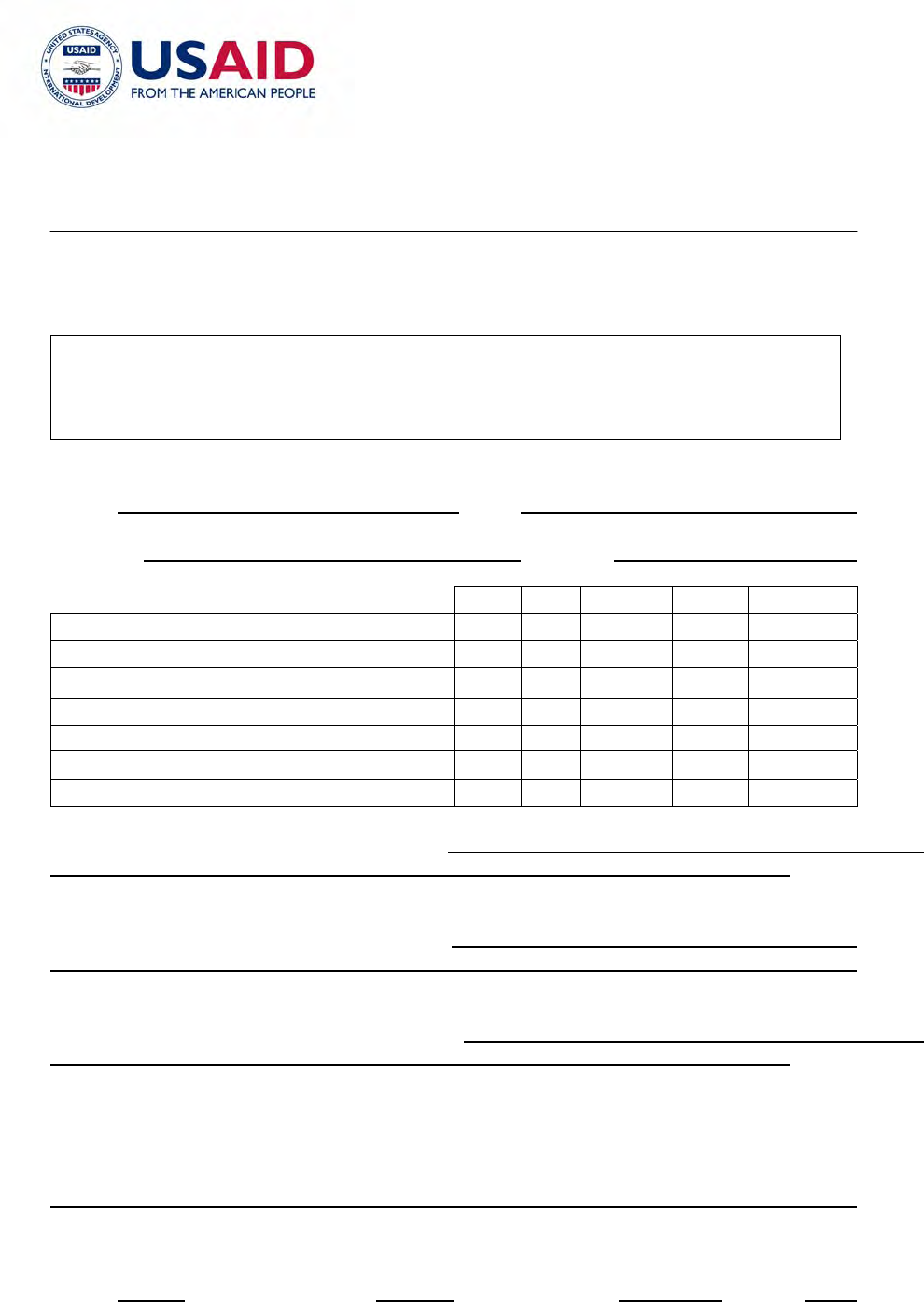
USAID ARMENIA SOCIAL PROTECTION SYSTEMS
STRENGTHENING PROJECT
²ØÜ Ø¼¶ г۳ëï³Ý êáóÇ³É³Ï³Ý å³ßïå³ÝáõÃÛ³Ý
ѳٳϳñ·»ñÇ Ñ½áñ³óÙ³Ý Íñ³·Çñ
38
Attachment 11 - Example of Job Fair Evaluation for Employers
JOB FAIR EVALUATION FOR EMPLOYERS
Thank you for participating in our Job Fair. Your comments are very much appreciated and
will help us plan for future job fairs. Please complete this evaluation by checking the
response that most accurately reflects your opinion.
Name: Title:
Company:
Phone#:
Poor Fair Average Good Excellent
1. The quantity of applicants
2. The quality of applicants
3. Applicants preparedness for interviews
4. Space provided
5. Setting of the room
6. Location of the job fair
7. Time allotted for the job fair
8. What did you like best about this job fair?
9. What did you like least about this job fair?
10. Suggestions for improving future job fairs:
11. Would you participate in another job fair sponsored by the SESA? Yes No
Why Not?
12. Please fill in your preference for a future job fair:
Month
Day of the Week Length of Time Hours

USAID ARMENIA SOCIAL PROTECTION SYSTEMS
STRENGTHENING PROJECT
²ØÜ Ø¼¶ г۳ëï³Ý êáóÇ³É³Ï³Ý å³ßïå³ÝáõÃÛ³Ý
ѳٳϳñ·»ñÇ Ñ½áñ³óÙ³Ý Íñ³·Çñ
39
13. Suggestions / Comments:
